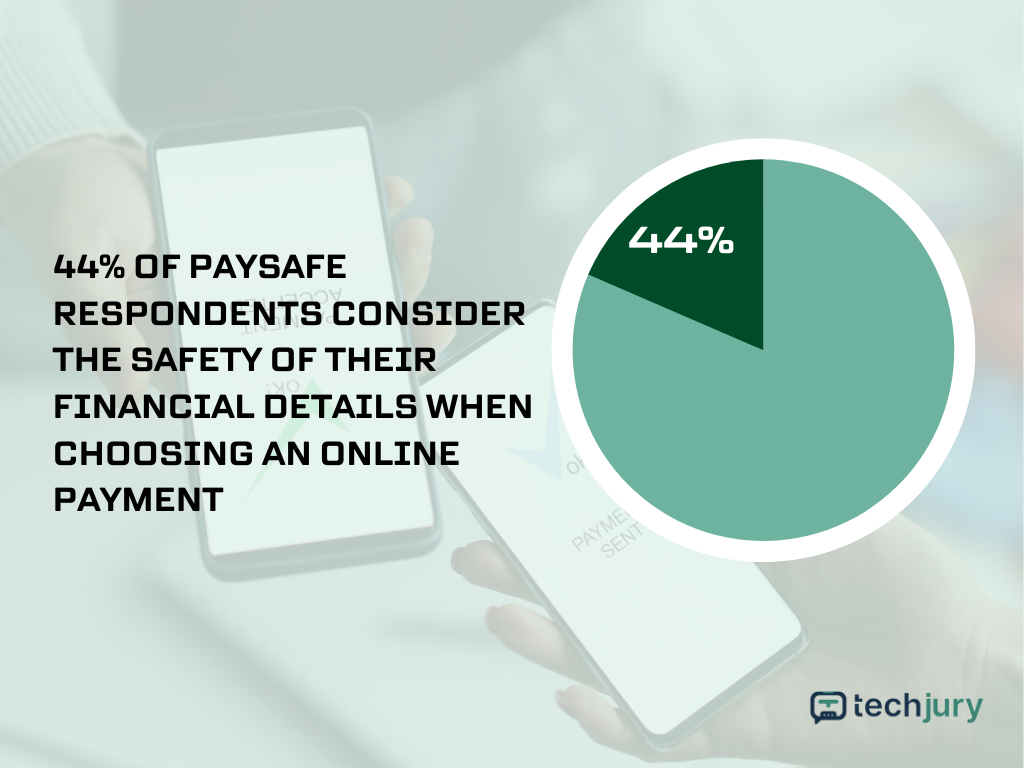

Updated · Feb 11, 2024
Updated · Jan 03, 2024
With a master's degree in telecommunications and over 15 years of working experience in telecommunic... | See full bio
Girlie is an accomplished writer with an interest in technology and literature. With years of experi... | See full bio
According to global hacking statistics, identity theft is a rapidly expanding issue in the United States and worldwide.
A total of 5.7 million cases were reported to the FTC, of which 1.4 million were identity theft, so much so that by 2029, the anticipated market for identity theft protection services will total $28 billion.
Below is a compiled list of identity theft statistics that gives a clearer understanding of this growing concern.
|
The first step in resolving any problem is understanding the whole issue. When it comes to identity theft, one way to grasp the issue is to discover how prevalent it is.
So here’s a list of identity theft facts and statistics that will help give you a better knowledge of the issue and the role it is currently playing in the world.
(Identity Theft.Org)
Identity theft cases are surging as ways to steal someone’s identity has become easier with the fast development of technology. According to statistics, a case of identity theft happens every 22 seconds in the US.
That figure led to over 400 million victims of identity theft in 2022, as the Identity Theft Resource Center reported.
Ultimately, an identity thief attempt will strike in less time than it will take to unlock your phone, take a deep breath, or open a door. That’s how fast a cybercriminal can intrude on your privacy.
|
👍 Helpful Article: With what you just found out about identity cases reaching an all-time high, it might make you question if privacy is still a thing in this digital age. This read on whether online privacy is a myth nowadays will answer your doubts. |
(Identity Theft.org, Dataprot.net)
The number of victims of identity theft has increased by 1 million within a year. Previously, there were 4.7 million victims, which turned to 5.7 million in 2022.
In the US, about 800,944 cybercrime complaints were reported to the FBI by the public, a 5% decrease from 2021. However, the total loss increased to $10.2 billion in 2022, up from $6.9 billion in 2021. California, Florida, and Texas had the highest number of cybercrime victims.
|
💬 Learn More: Looking at these significant figures, one would wonder if nothing is done to lessen these fraudulent acts. Still, cybersecurity agencies are doing their best to keep up with trends and get these hackers in check, but these criminals constantly find new techniques for their operations. |
(Javelin Strategy)
Javelin Strategy & Research Identity Fraud's recent study revealed that identity theft affected 40 million US adults in 2022. This massive number of people suffered a significant loss of $43 billion.
The primary consequence of identity theft is financial tolls, such as:
(Identity Theft.org)
Identity theft cases in the US are nearly three times higher than in other countries.

This number would be even more significant given the unknown number of unreported identity theft victims.
The biggest data breach to date undoubtedly involved many people unaware of having their identities stolen. This makes estimating the number of persons affected by identity theft more challenging.
(Statista)
In 2022, the most targeted age group for identity theft was 30 to 39-year-olds. The Federal Trade Commission (FTC) in the United States reported 286,890 cases in that age group.
Older millennials between this age group are the most affected by all three types of fraud, which are:
The older the age range, the fewer reports of fraud cases in these categories appear.
In contrast, Gen-X and the youngest Baby Boomers aged 50 to 59 are half as likely to report credit card fraud as older millennials.
(IBM)
The primary reason cyber-intrusions get missed is alert fatigue. That happens when security and risk professionals receive many alerts and ultimately become desensitized to them.
|
🎁 Bonus Fact: There are 30,000 websites worldwide that get hacked daily, and almost half of them target small businesses, which delays detection. |
Due to desensitization from these alerts, identifying and containing a data breach took 277 days (about 9 months) based on a 2022 report. This timeline shows a 3.5% decrease from 287 days in 2021.
Your credentials become public if you've ever had internet transactions. Unfortunately, most of the identity theft takes place in this way.
Below are some consumer statistics on identity thefts and their hazardous impacts on people’s lives.
(Comparitech)
Data or online privacy is a huge issue, specifically over unsecured networks. According to statistics, 87% of customers who access their emails, bank accounts, and other financial information have exposed their data on the Internet.
VPN could have prevented such occurrences of fraud. It’s a valuable Internet privacy and protection tool that most people overlook.
Moreover, most people don’t understand the risks when using public Wi-Fi networks. These are unrestricted networks available to the general public. Most airports, coffee shops, libraries, etc., have it.
Although convenient, public Wi-Fi networks are where most cybercriminals easily harvest their victims. With that, here’s some helpful and thorough advice regarding using public Wi-Fi networks:
Comment
|
(The Zebra)
Although people usually share their login credentials with someone they can trust, there’s still a chance they can get into the wrong hands. Being that careless with personal data significantly contributes to the rising identity theft rate.
Furthermore, most people are aware that it is risky to recycle passwords. However, many repeatedly use the same password because they don’t want to forget it.
To add all that together, let’s imagine a short scenario:
You agreed to share your Netflix account with a friend since, so far, you are the only one using it. Now, your password habit is creating one password for everything. So whatever you use for Netflix, you are also applying to others.
As for your friend, they log in to your Netflix account while in public and use an unrestricted network for Internet connection. Unfortunately, hackers lurk around that public network that harvested information regarding your Netflix account.
What’s next? The hacker will try to log into your accounts, whether on social media or your banking app, and take whatever they can.
|
✅ Pro Tip: Start building strong password habits to prevent falling victim to hackers and crimes like identity theft. Check out these Techjury articles that can help you protect your information: |
(Paysafe)
In April 2022, Paysafe surveyed 11,000 consumers in 10 countries across Europe and America. The survey determined consumers’ evolving payment preferences and attitudes toward security and convenience in online payments.
Paysafe discovered that consumers prioritize security over convenience in online payments, as 70% prefer to keep their financial information private.

Their reasons are valid, as the alarming increase in internet scams and account takeovers makes it imperative to be careful about how you release your details over the internet.
(Security.org)
VPN stands for “virtual private network,” which helps users maintain a secure connection. It can provide solid protection from potential cyberattacks that occur every 39 seconds.
A good VPN will protect all data sent to and from your computer. This could even mitigate the need for identity theft software or other extraneous products.
That said, using a VPN can go a long way in preventing hackers from accessing your information over the internet, location, and the extra levels of security it brings.
However, only 32% of consumers do not use a VPN when surfing the web. Meanwhile, this is the breakdown of VPN usage among people who use it:
|
Purpose of using VPNs |
Respondents |
|
For personal use only |
29% |
|
For business use only |
24% |
|
For business and personal use |
15% |
|
📖 Read more: Some people still hesitate to use VPNs because of myths about it, such as finding VPNs complicated. Spoiler alert: it’s not! |
One of the main consequences of identity theft is its financial costs, and it’s a multi-billion problem that costs a lifetime of savings for most victims.
In 2021, the total cost of identity fraud losses amounted to $52 billion. However, it saw a 17% decline the next year, costing $43 billion, which is still significant.
Read on to learn more about the Identity theft cost statistics 2023.
(Chargebacks 911)
Merchants and banks lost about $31 billion in 2021, and statistics forecast this type of theft will almost double in the next few years. That figure will climb by $12 billion in the next four years.
That said, it’s vital to maintain and be mindful of how you handle your credit cards. Moreover, you must always be vigilant when using them, whether for online or offline purchases, as loss of it can cause severe financial losses.
(Fortune Business Insights)
There was a demand for the global identity protection segment throughout the pandemic. Privacy was a hot topic during that period because the lockdowns forced almost all transactions to happen online.
With that, the ID protection field continued to experience higher demand than usual. In 2022, the segment will be worth $11.39 billion.
According to identity theft predictions, the global protection services market will grow from $11.39 billion to $27.90 billion by 2022 and 2029, respectively, exhibiting a CAGR of 13.7%.
This is unsurprising as the steady increase in identity theft reports calls for more efforts, resources, and human resources to mitigate and possibly curb these criminal acts.
(AARP)

Identity theft numbers involving children are shocking. Furthermore, the result was an average loss of $737 per family.
Social media is the biggest culprit in aiding online criminals to gather information about a child. Some parents also divulge data like their children’s full names, date of birth, where they go to school, etc., by posting about it on social media.
|
⚠️ Beware: According to statistics about social media kidnapping, 1 in 4 kids share their personal information on social media without hesitation. |
(Australian Payment Network, Juniper Research)
This is a complicated form of fraud to combat, as it happens when credit card data gets processed by a thief without ever touching the physical card.
How do they do it? Well, people are shopping online more than ever. Moreover, billions of users pay using their mobile banking apps or wallets when purchasing online.
However convenient that may sound, the expansion of eCommerce trading has made fraud even more tempting. Online stores are now the new target for cybercriminals, making it easier to scam people on social media and other online shopping platforms.
(IT Governance)
IT Governance’s 2022 report shows a 14.8% decrease in security incidents, accounting for 480,014,323 breached data records in the same year. In 2021, there were 1,234 incidents, which decreased the following year to 1,063.
This is a positive development regarding organizations’ fight against several cybercrimes and their ability to prevent data breaches. However, they shouldn’t relax, as criminal hackers continuously develop new techniques to outsmart defenses.
(Forbes)
Cybersecurity Ventures estimates annual cybercrime costs will be $10.5 trillion by 2025. Gartner analysts predict that a supply chain attack will affect 45% of global enterprises over the next two years.
This prediction should serve as a message for businesses, government agencies, and individuals to be careful and vigilant in exposing their information, especially financial data and online transactions.
Falling victim to identity theft does not just affect someone’s financial standing. It also triggers various emotional reactions.
Upon learning that they suffered identity theft, the victim might feel angry and be shocked. Then, other, more challenging emotions manifest. Mishandling these emotions can lead to long-term consequences.
Learn more about the non-financial impacts of identity theft below.
(Lifelock)
Falling victim to identity theft leaves a long-standing mark on someone’s life. Once that happens, it will be difficult for the victim to trust the system again.

With that, they constantly worry about their financial security, fearing that they might not recover from it or that it might happen again.
(All State Identity Protection)
The shocking aspect isn’t the monetary value but the time spent solving the issue. Clearing one’s name is a stressful process that can take quite a while. Hopefully, these identity theft numbers will wake you up to take measures to protect yourself.
Identity theft can put your life at a standstill, from financial devastation to emotional pain. Victims may spend months trying to clear their credit and names depending on the type of theft.
(Lifelock)
The loss due to identity theft may be overwhelming. The victim deals with loss, frustration, helplessness, anger, betrayal, etc. Ultimately, that contributes to feelings of stress, and the victim can also start experiencing anxiety.
When that happens, emotional stress affects the person’s sleeping schedule and eating habits. With just one case of identity theft, a person’s whole life will shift dramatically.
Identity theft statistics show the issue will become increasingly important as time passes. Understanding the threat and what measures you can take for protection is essential, especially in this present high-tech society.
The fight against cybercrime isn’t an easy task. As such, the government and people need to help out in any way they can and render support financially, morally, and resource-wise to these agencies to ease the pressure they face daily in pursuit of these criminals.
Hopefully, the statistics above have given you a broader understanding of the topic and how it affects the world. More importantly, the figures must inspire everyone to take better care of their personal information, whether online or in physical life.
Financial identity theft (credit card fraud) is the most common form of identity theft.
The Federal Trade Commission's Consumer Sentinel data classifies identity theft into; Credit card fraud, Phone and utility fraud, bank fraud, employment or tax-related fraud, medical services fraud, online shopping or payment account fraud, and email or social media fraud.
Hackers quickly get their victims' personal information by purchasing breached data on the dark web.
Your email address will not be published.
Updated · Feb 11, 2024
Updated · Feb 11, 2024
Updated · Feb 08, 2024
Updated · Feb 05, 2024




